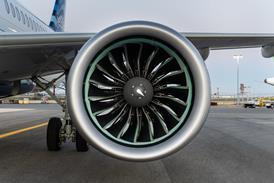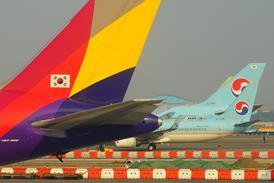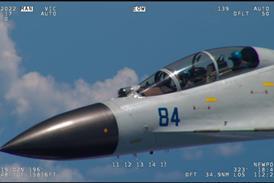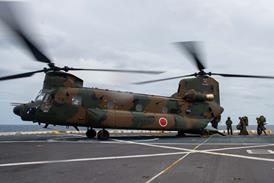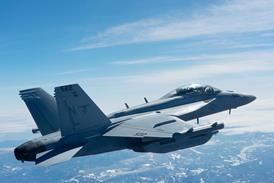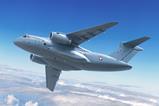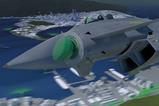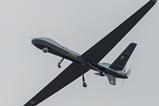Our annual World Air Forces directory – published in association with Embraer – details the military aircraft fleets of 161 nations, and analyses the main events of the last 12 months. To read and download the full report, which includes detailed fleet listings totalling more than 52,600 aircraft, scroll to the bottom of the page.
Military action in 2024 began in early January with US and UK combat aircraft conducting strikes against Houthi rebels in Yemen, following drone and anti-ship missile attacks launched against commercial shipping in the Red Sea. US Air Force (USAF) Northrop Grumman B-2 stealth bombers were also later called into action against the same militant group.
Continuing the nation’s response to terrorist attacks staged in October 2023, Israel’s air force widened its prosecution of Hamas and Hezbollah targets in the Gaza Strip and Lebanon, and also struck sites in Iran and Yemen.
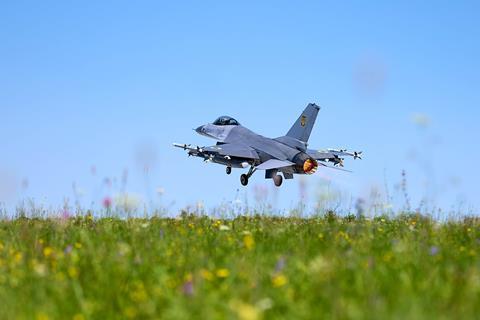
The war in Ukraine, meanwhile, has caused further attrition to the aircraft fleets of the embattled nation and its invader, Russia. Notable developments included Moscow’s loss of two Ilyushin Il-76-based A-50 airborne early warning and control (AEW&C) aircraft, along with a Sukhoi S-70 Okhotnik ‘Hunter’ unmanned combat air vehicle. The stealthy asset is believed to have been shot down by a Russian fighter after control of its activities was lost.
ALLIED SUPPORT
Ukrainian President Volodymyr Zelensky’s long campaign to equip the nation’s air force with western fighters at last tasted success, with the service receiving its first of almost 100 Lockheed Martin F-16s pledged by NATO members. The number of aircraft received so far is unknown, but one example was lost just days after the type’s introduction.
As further boosts to Kyiv, Sweden is to transfer its two Saab 340 Erieye AEW&C aircraft, while France plans to hand over its Dassault Aviation Mirage 2000-5 fighters.
Due to the difficulty of validating both sides’ losses in a conflict zone, the Cirium fleets data used for FlightGlobal’s 2025 World Air Forces directory shows little change from our previous report. Ukraine is recorded as having 324 military aircraft – up three from last year – while Russia boasts 4,292: a rise of 37.
Elsewhere, NATO turned 75 during the year, and welcomed Sweden as its 32nd member nation. Stockholm’s accession means the alliance now has an unbroken eastern flank facing Russia, through Scandinavia, the Baltic States, eastern Europe and the Black Sea.

Alarmed by Russia’s activities, defence spending is rising among alliance partners, with 23 countries now meeting or exceeding its baseline investment equating to at least 2% of their gross domestic product.
Taiwan remains as another potential future flashpoint, as it remains subjected to frequent airspace incursions by Chinese military aircraft as Beijing seeks to influence what it views as a breakaway province.
In other notable developments, both of Lockheed’s current fighter programmes hit major milestones, with deliveries of the fifth-generation F-35 passing the 1,000-unit mark and the F-16 still in production 50 years after its first flight.
With deliveries having resumed in July after a one-year pause due to difficulties with certificating its new Technical Refresh 3 (TR-3) standard, the F-35 will soon rapidly climb our Top 10 ranking of combat aircraft types. This year it remains in sixth place, at 712 units, with another 219 employed as dedicated training assets. Including TR-3-configured examples kept in storage during the delivery halt, Lockheed expects to hand over 90-100 examples this year, rising to 180 in 2025.
FLEET ATTRITION
Our new directory details some 52,642 aircraft in active use with the armed forces of 161 nations. This marks a net decrease of 759 from 12 months earlier, or a roughly 1.5% reduction.
Two regions experienced 1% fleet size increases during our review period: Africa, which at 4,230 was up 53; and the Middle East (4,595; up 22). Russia and the Commonwealth of Independent States (CIS) nations saw no percentage-scale change, with a year on year increase of 10 aircraft, to 5,124.
Net decreases affected the remainder, including a 1% reverse for fleets in the Asia-Pacific region (14,583; down 160) and North America (13,394; down 190). Europe’s collective total dropped by 4% (7,760; down 305), while Latin America saw the largest percentage fall, of 6% (2,956; down 189).
In addition to increasing the region’s total fleet strength, African nations were busy on the procurement front. Nigeria has signed for 24 Leonardo M-346FA light-attack aircraft, while Tanzania will take two of the Italian airframer’s C-27J Spartan tactical transports during 2025.
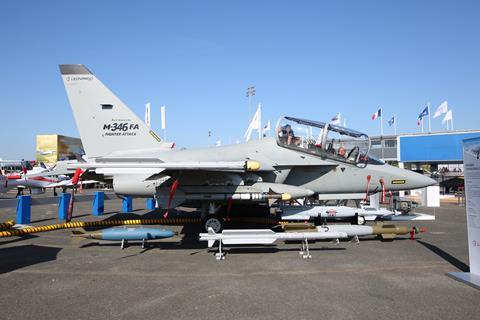
Cirium data shows that two African nations sent Soviet-era fighters into retirement, with the Democratic Republic of the Congo removing its two Mikoyan MiG-23s, and Uganda ending its use of five MiG-21s.
In the Middle East, the United Arab Emirates received its fifth and final Saab GlobalEye surveillance aircraft: a heavily adapted version of the Bombardier Global 6000.
Saudi Arabia, meanwhile, ordered four more Airbus Defence & Space A330 multi-role tanker transports, to add to six in-use examples. Deliveries will run from 2027.
This year’s fleet total for Russia and its regional allies was the subject of a single-figure aircraft adjustment due to Moldova’s intention to withdraw from the CIS grouping, in which it has not been actively involved since late 2022.
Kazakhstan, meanwhile, ended operations with the MiG-31 and Sukhoi Su-24, withdrawing 20 and 13 examples, respectively.
Among Asia-Pacific operators, Indonesia’s air force completed its five-strong fleet of Lockheed C-130J tactical transports, and Thailand took its first two of eight Beechcraft AT-6s.
PROCUREMENT ACTIVITY
The region also saw strong procurement activity, including Azerbaijan’s order for 12 Chengdu/Pakistan Aeronautical Complex JF-17 fighters and trainers. Indonesia signed the final element of a three-phase acquisition totalling 42 Dassault Rafales. And South Korea in December 2023 awarded Embraer a contract to deliver three C-390 tactical transports.
Overall in the Asia-Pacific region, the combat aircraft fleet total fell by 279 units, or 6%. A significant portion of that reduction is due to the Indian air force cutting its fleet of MiG-21s to 36 aircraft, down from 127 a year ago. North Korea’s Chengdu F-7 fleet also has been marked down from, 120 to 30 – and it is worth noting that Pyongyang’s estimated inventory of 861 aircraft is still most likely over-generous. Pakistan’s F-7 inventory also has fallen from 135 last time to 72.
Types leaving use included South Korea’s last McDonnell Douglas F-4E Phantoms: 24 had been listed in our previous directory. Australia ended operations with the Lockheed AP-3C Orion in December 2023, retiring two special mission-roled examples tasked with electronic warfare duties. And Thailand waved off its remaining 19 Pilatus PC-9 basic trainers.
Activity in North America included Canada receiving its first of three Beechcraft King Air 350ER-based intelligence, surveillance and reconnaissance aircraft. And the USAF welcomed a lead Gulfstream G550-based EA-37B Compass Call signals intelligence jet.
Ottawa in May 2024 announced a major deal to establish future pilot training services via the SkyAlyne joint venture between CAE and KF Aerospace. Its future fleet will include a total of 71 aircraft, split between the De Havilland Canada Dash 8-400 (3), Grob Aircraft G120TP (23), Airbus Helicopters H135 (19), King Air 260 (7) and PC-21 (19).
Canada has yet to determine its future advanced jet trainer plans, however, having retired its 17 BAE Systems Hawk 155s.
US DEPARTURES
Meanwhile, the USAF completed the drawdown of its McDonnell Douglas KC-10 tanker fleet: 20 had been listed in our last directory. The same service’s final Northrop E-8C JSTARS ground surveillance aircraft also left use, at the end of 2023.
In Europe, Albania in January 2024 received two Sikorsky UH-60 Black Hawks, from surplus US Army stock. Croatia’s air force welcomed its first six Rafales in April: in all, it will receive 12 ex-French air force examples. And Greece took its first three of seven MH-60R Seahawks, with the remainder to follow in 2025.

Major procurement activity included a Czech Republic order for two KC-390s, the first of which will be received in 2025. Paris signed a tranche 5 deal for 42 Rafale Cs for the French air force, for delivery from 2027. Hungary signed for an additional four Saab Gripen Cs, in a move which will add to its 14 C/Ds in current use.
Spain has ordered 16 Airbus Defence & Space C295s, to be operated in maritime patrol and maritime surveillance configurations.
Greece in January 2024 secured US approval for a potentially 40-aircraft F-35A buy, including 20 options. An order has yet to be finalised. Turkey at the same time secured permission to advance with a prospective follow-on purchase of 40 more F-16s.
Departures included the Italian air force’s AMX aircraft, with 19 combat and five training examples removed. Italy also ended use of its Bell 212 transport helicopters, 28 of which had been listed last time.
The Spanish air force retired the Enaer T-35 trainer, 34 of which had been in use, while its navy axed its last seven Bell 412s.
In Latin America, the Dominican Republic in March took delivery of four Leonardo Helicopters AW169s. The following month, Argentina signed a deal with Denmark to acquire 24 of its secondhand F-16s.
Paraguay and Uruguay have become the latest customers for Embraer’s EMB-314 (A-29) light-attack aircraft, with the nations having ordered six, and one plus five options, respectively. The Super Tucano model is already flown in the region by Argentina, Brazil, Colombia and the Dominican Republic.

Notable reductions include Brazil having trimmed its AMX fleet from 50 to 10, while Cuba’s inventory has been updated by removing its MiG-23s (24) and MiG-29s (3), and its Aero Vodochody L-39 trainer fleet has been slashed from 26 to three.
In terms of regional balance, Asia-Pacific operators’ combined 14,583 aircraft rank it ahead of the 13,394 in North America (97% of which are US-owned) by 1,189: 30 more than a year ago.
NUMERICAL ADVANTAGE
The USA has 25% of all operational military aircraft, and heads all six of our equipment listing categories. Its numerical advantage ranges from having 19% of all combat aircraft and 34% of special mission assets to 75% of tankers. Its total of 13,043 aircraft is more than the combined strength of second- to sixth-ranked Russia, China, India, South Korea and Japan.
Available to read and download as a 36-page report, our annual fleet review – produced in association with Embraer – excludes aircraft recorded as not in day-to-day use, in storage, or involved in or awaiting upgrade.
Also excluded are more than 730 aircraft permanently assigned to performing VIP, government or private duties, and more than 160 flown by paramilitary/reserve organisations in Belarus and Russia.
Other omissions include 362 platforms categorised as dedicated experimental or research and development assets, and over 150 assigned to tasks such as calibration, firefighting, satellite tracking, skydiving, target towing, and weather reconnaissance. Where identified, we also exclude aircraft which are permanently assigned to aerobatic display teams – such as the Blue Angels (USA), Blue Impulse (Japan), Red Arrows (UK), and Snowbirds (Canada).
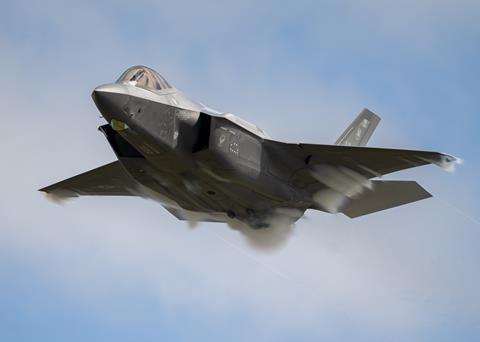
Our directory – the initial data for which was drawn on 8 October – also includes information about firm orders for some 4,350 aircraft, and letters of intent or options for up to another 6,091 (denoted by an asterisk next to a figure in the Ordered column). The latter total includes a potential 2,049 F-35s which have yet to come under contract.
Supporting documents
Click link to download and view these filesFlightGlobal_World Air_Forces_2025
PDF, Size 6.52 mb


